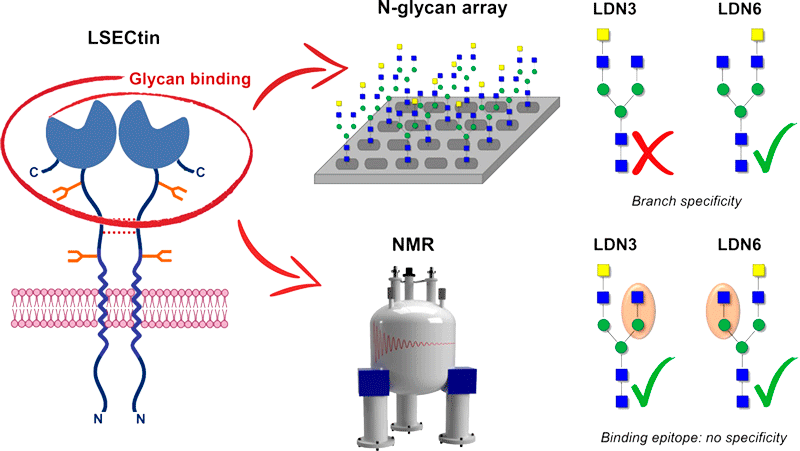
2022/10/17
Immobilization of Biantennary N-Glycans Leads to Branch Specific Epitope Recognition by LSECtin
A collaborative research from the Chemical Glycobiology and Computational Chemistry Labs at CIC bioGUNE, together with the Glycotechnology Group at CIC biomaGUNE, and the Institut de Biologie Structurale at the University of Grenoble-Alpes, has concluded that the molecular recognition features of complex asymmetric N-glycans by L-sectin, a lectin of our innate immune system may strongly differ under different experimental conditions. NMR and microarray experiments showed that L-sectin recognizes the terminal GlcNAcß1-2Man epitopes in symmetric complex N-glycans. However, the microarray data showed that L-sectin selectively recognizes the α1-3 arm of the glycan, provided it is not capped by Gal moieties. In contrast, the analysis of the NMR data acquired in solution allowed demonstrating that both branches are recognized in a similar manner. Thus, different results can be obtained using different experimental approaches, pointing out the tremendous difficulty of translating in vitro results to the in vivo environment.
Immobilization of Biantennary N-Glycans Leads to Branch Specific Epitope Recognition by LSECtin
S Bertuzzi, F Peccati, S Serna, R Artschwager, S Notova, M Thépaut, G Jiménez-Osés, F Fieschi, NC Reichardt, J Jiménez-Barbero, A Ardá
ACS Cent. Sci. 2022 https://doi.org/10.1021/acscentsci.2c00719
See a large version of the first picture





